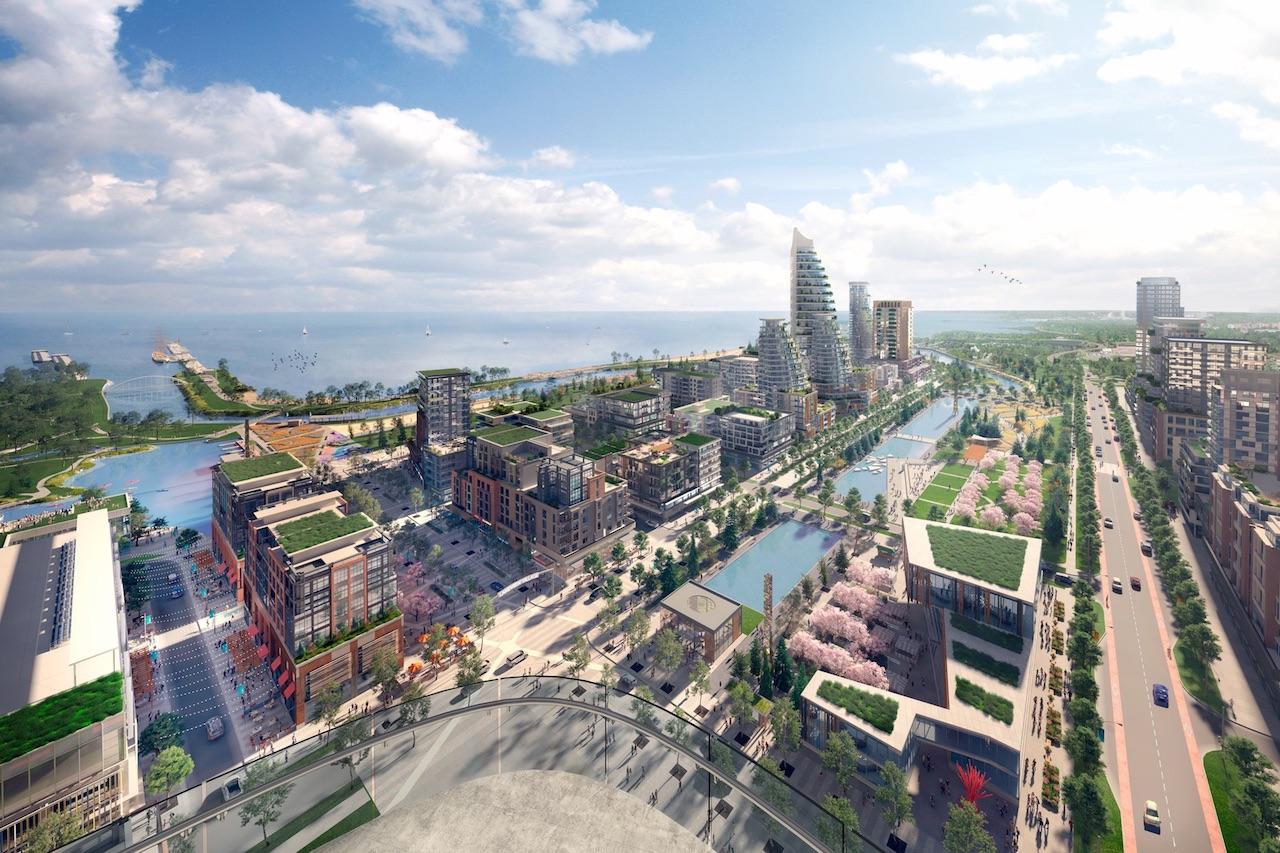I'm looking to understand the concessions that the developers will be providing in exchange for these MZOs. While this process is helpful for breaking the logjam with intransigent NIMBY municipalities, it is not very transparent, nor democratic.
I was thinking a Lakeshore W GO station between Cawthra and Ogden would be well-placed to serve this added density. Still, this would be 1.5-2km from much of this development.
I think it might be more prudent to try to get some of the employment uses closer to the GO station/QEW. I think people are more likely to take transit for commuting if the station is relatively close to their workplace, and are willing to travel a bit further from their home (this is where bike+transit can be very powerful at increasing catchment area for transit stations).

news.ontario.ca
TORONTO — In support of Ontario’s goal of building 1.5 million homes by 2031, the Minister of Municipal Affairs and Housing has issued two Minister’s Zoning Orders for several locations within the City of Mississauga. These orders will facilitate the province’s work to tackle the housing supply crisis and ensure that housing supply growth is aligned with and oriented around Ontario’s billions of dollars of historic investments in transit and transit-related infrastructure. These investments include the all-new Hazel McCallion LRT and the ongoing work to expand service on and electrify the Lakeshore West GO Transit line.
These orders will support the construction of approximately 18,350 homes near transit, along with substantial community benefits and upgraded infrastructure, with the costs of these benefits to be borne by the home builders – not the taxpayer. Furthermore, it is the government’s expectation that a minimum of 10 per cent of these homes be offered as affordable and attainable homes to help more Ontarians achieve the dream of homeownership.
Among the impressive public benefits and new infrastructure planned for these communities that will be paid for by the home builders are the following:
- Thousands of new affordable and attainable homes within steps of transit
- New, improved, and expanded roadway and mobility infrastructure to ensure the safe, sustainable, and efficient flow of people and traffic as these areas grow
- A new waste-water treatment plant to support sustainable growth
- New transit services and infrastructure, including a prospective new GO Train station on the Lakeshore West Line to offer more transit options to people and get cars off the road and people out of gridlock
- New schools and childcare spaces to support families
- New and improved community spaces and environmental projects, including a new public waterfront trail and pier area
“Our government is continuing to act decisively to tackle the housing supply crisis and ensure Ontario has a range of housing options to meet demand,” said Steve Clark, Minister of Municipal Affairs and Housing. “By aligning new housing with our government’s historic investments in transit and transit-related infrastructure, we are supporting the development of complete communities that will deliver on our commitment to help more Ontarians find a home that meets their needs and budget.”
In the coming days, the government will continue its work alongside proponents, the Region of Peel, the City of Mississauga, and Indigenous partners to facilitate approvals and ensure the realization of tangible community benefits. It is the government’s expectation that the cost of planning for and developing these benefits and the infrastructure required to service these communities will be borne by the home builders.
The first order relates to a property located at 1082 Lakeshore Road East. The second order relates to two parcels of land at 3355 and 5645 Hurontario Street. All the affected properties are within existing MTSAs, which provide greater opportunity for density and expanded housing options for Mississauga residents as a result of changes implemented by the province through the
More Homes Built Faster Act, 2022.
These orders are consistent with the government’s approach to speed up approvals, ensure more housing is built near and integrated with transit stations and tackle the housing supply crisis. The government will continue to make use of the tools at its disposal in order to support the construction of new homes and align that construction with the province’s historic investments in transit and related infrastructure.
Quick Facts
- Major Transit Station Areas are areas within walking distance of a transit station that are planned to be the focus of growth and new housing construction, to align the province’s historic investments in transit and infrastructure with its efforts to tackle the housing supply crisis.
- Ontario is continuing to take steps to tackle the housing supply crisis and meet its pledge of 1.5 million new homes by 2031, including through the introduction of its most recent housing supply action plan, Helping Homebuyers, Protecting Tenants.
- Earlier this year, the City of Mississauga pledged to do its part to tackle the housing supply crisis by committing to meet a target of 120,000 new homes by 2031.
- In 2022, Ontario saw the second-highest number of housing starts since 1988, with just over 96,000 new homes. Ontario also broke ground on nearly 15,000 new purpose-built rentals, the highest number ever on record.
- The Lakeview Village development located at 1082 Lakeshore Road East is expected to permit 16,000 new residential units.






